To tame a wasteland
An overgrown tract of an old prison offers a chance to do something visionary. But what will it take to wrest 10 forgotten acres back from the brink?
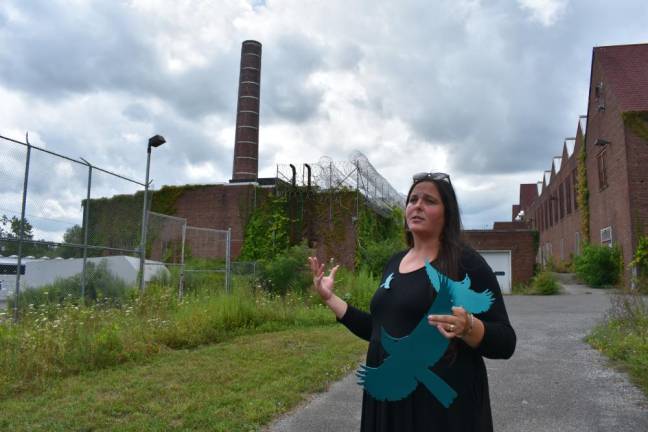
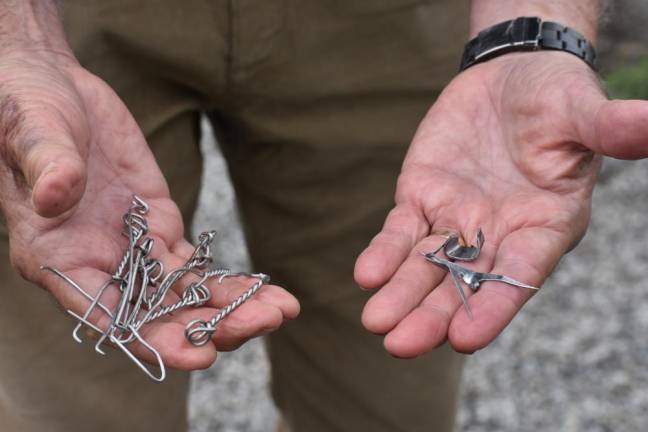
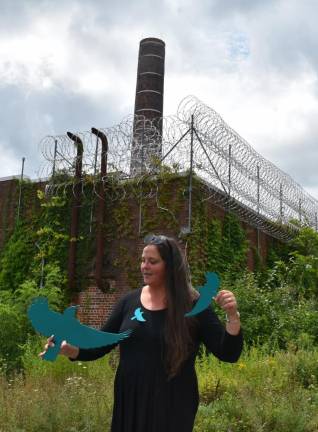
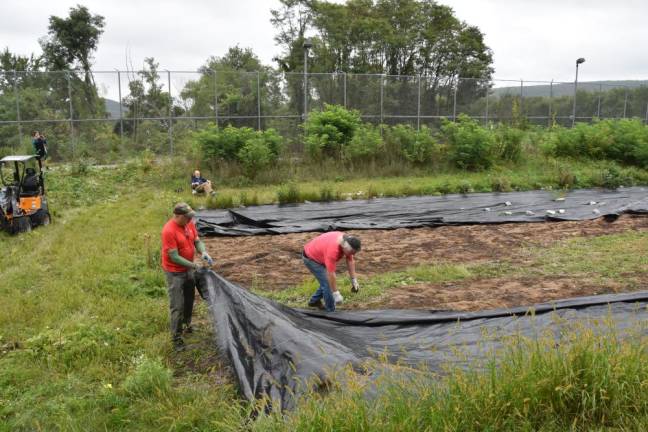
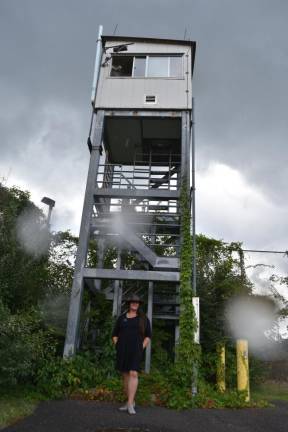
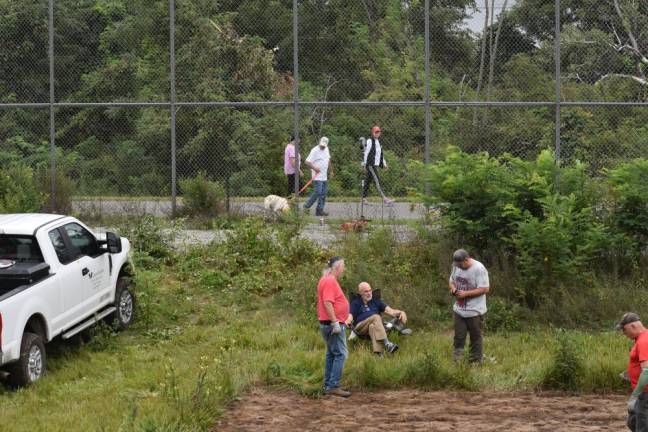
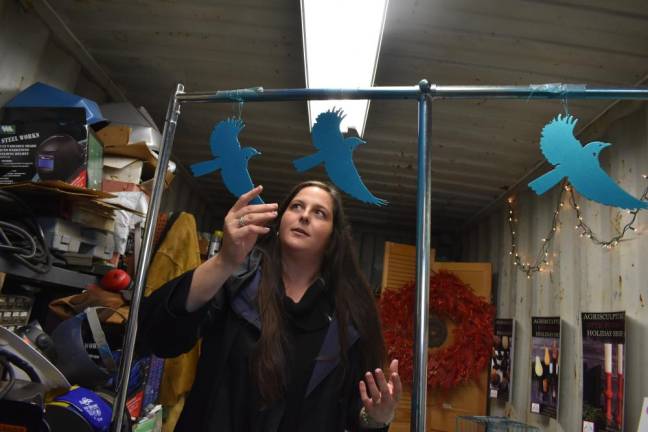
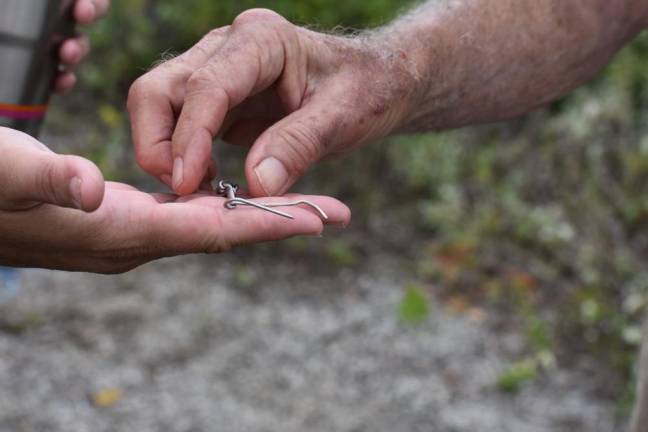
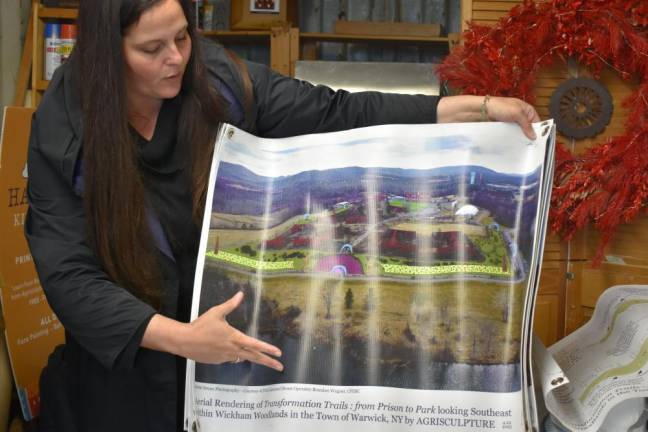
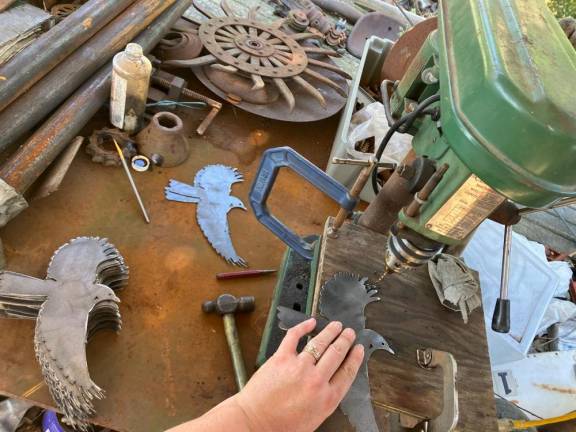
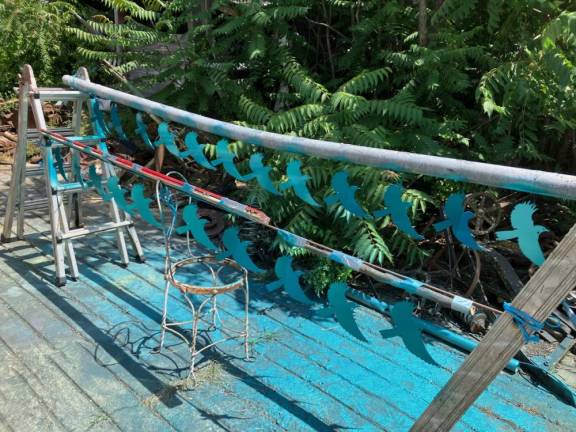
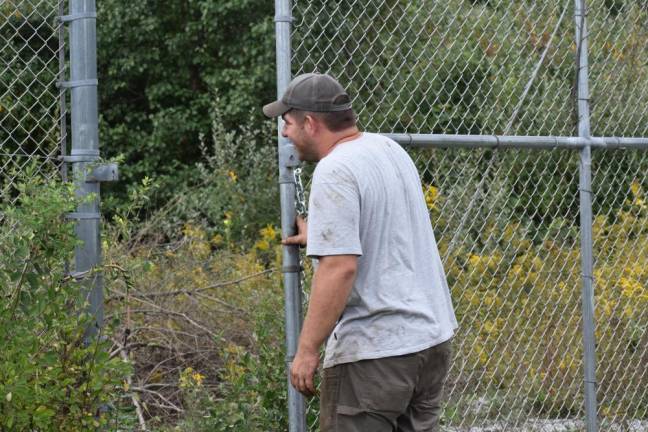
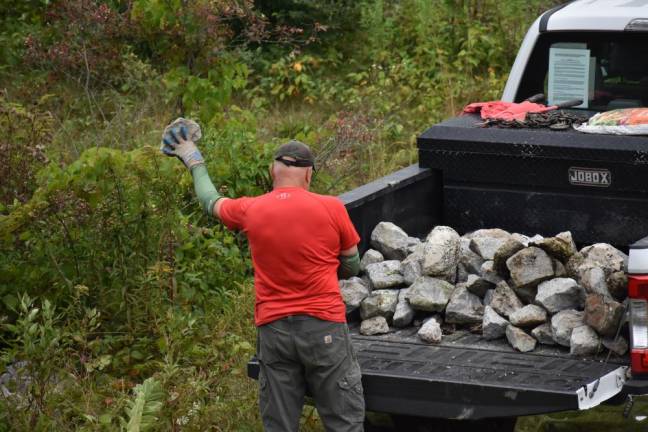
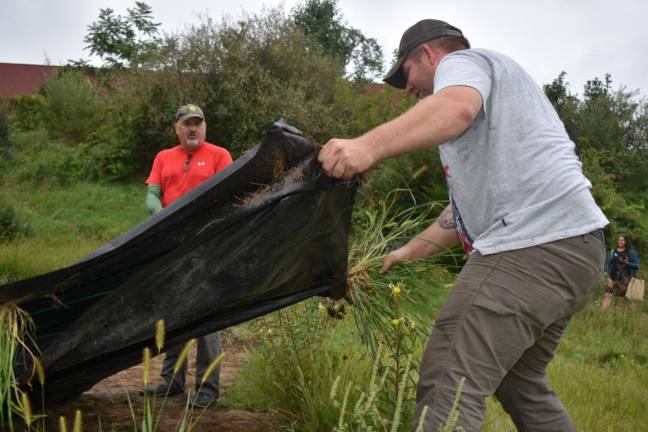
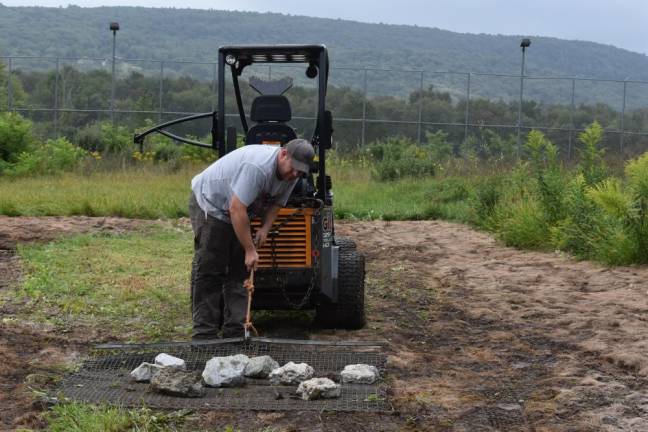
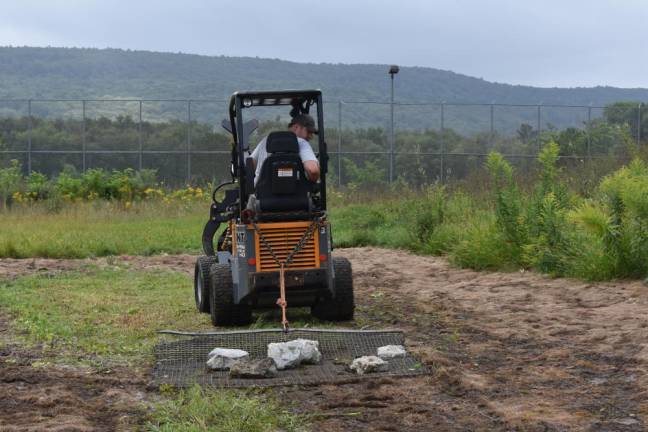
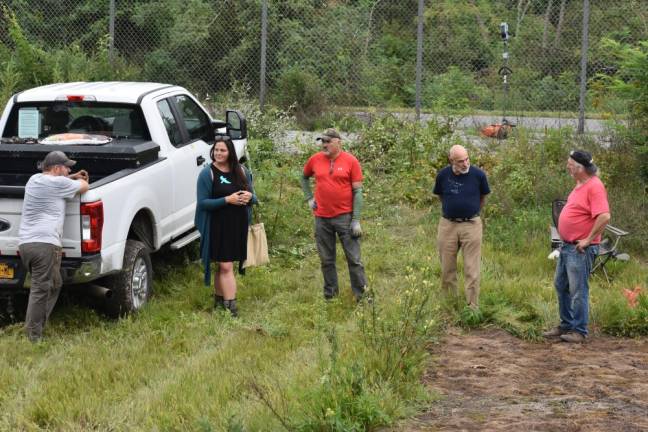
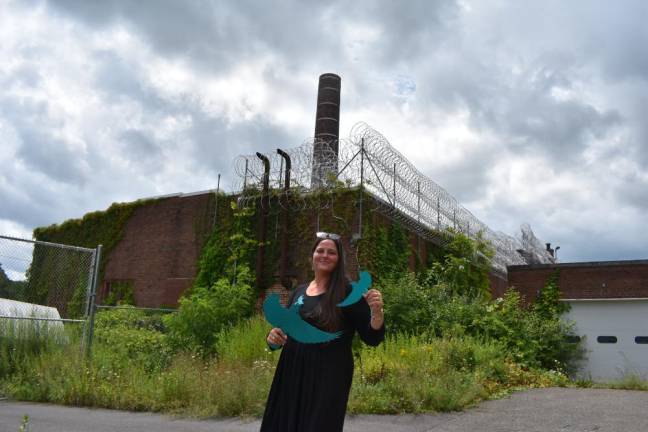
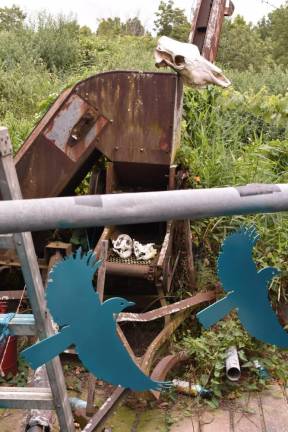
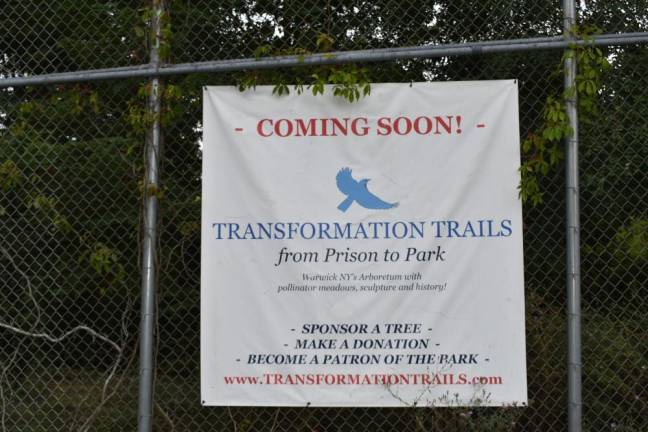
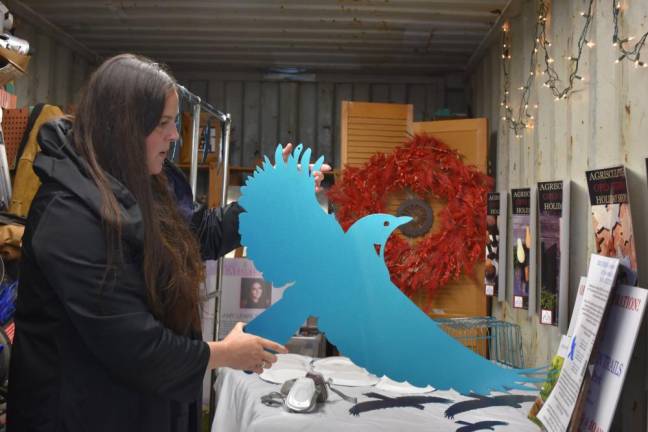
Amy Lewis Sweetman is in her studio, which is a shipping container next to a compost heap on the dairy farm where she and her husband live. The jerry-rigged foyer is shaded by woven plastic roofing material left over from the cow barn across the street.
This is the headquarters of Agrisculpture, where Sweetman creates sculpture out of disused antique farm equipment that would otherwise be moldering in a field. She does whatever else people need, too, she says, pointing out a rusty vintage glass-topped table that she’s restoring. “I don’t have a sign because I don’t need a sign,” she said. “They find me.”
A commanding view of the mountains is accented by birds in the distance, for which Sweetman keeps a sharp eye out. On my first visit to her studio, “our bald eagle” is gliding along the ridgeline, she says, following the bird with her eyes. On my third, she points out a tree where she spotted a blue heron harassing four white herons.
She gestures to the partially finished and not-yet-begun projects lying around: old car parts, a speed limit sign, a couple dozen antique squeeze clamps, a bannister, an assortment of horseshoe crab shells and various animal skulls, a vintage wood burning stove, what looks like an air shaft for a building’s ventilation.
“For the most part, it doesn’t seem valuable. It literally is piles of rusty junk. But if you have knowledge of engineering and the skills of a welder....” she said, thoughtful. “Over the years, I’ve come to understand that my true art form is the art of transformation.”
That power to restore and heal is, Sweetman believes, what brought her into orbit of what may be her biggest, most challenging project yet: cleaning up an overgrown, metal-littered, trauma-burdened piece of land encircled by chain link fence, and turning it into another gem in Warwick’s park system.
IN 2022, GEOFF Howard of Sustainable Warwick left a note for Sweetman in her studio, inviting her to take a look at a piece of property that had caught his attention.
“This started almost as a whim. I walk by here on the outside walkway regularly, and I noticed it was this funny area between the two fences that was really not looking right,” recounted Howard, on a late August workday at the old prison site.
The town had acquired the shuttered 750-acre Mid-Orange Correctional Facility in 2014. One hundred fifty acres of the former prison are now a fully occupied light-industry commercial park that includes a sports complex, multi-ability baseball field, architectural offices, and in an about-face of purpose whose irony is potent, a brewery, whiskey bar, and a four-company cannabis campus that includes two of New York’s largest growers. The remaining 600-plus acres, now called Wickham Woodlands, are dedicated to open space, giving Warwick a park more than two-thirds the size of Central Park. On any given day dog-walkers and joggers share the erstwhile prison road with cyclists and baby strollers, while kayaks launch onto the 166-acre lake.
But as the business center sprung up around it and the park grew ever more popular, this weedy 10-acre no man’s land grew wilder with each passing year. The horseshoe-shaped buffer, surrounded by two miles of 17-foot tall chain link fencing, had long separated inmates from freedom. After 13 years’ neglect, the guard tower is choked in poison ivy and Virginia creeper, the footpaths where guards once patrolled have been all but swallowed, and coyote scat hints at an active nightlife.
“Shouldn’t we tell the Hudson Sports Complex to do something?” Howard asked then-supervisor Michael Sweeton in 2022. Most of that land actually belonged to the town, Sweeton answered – and yes, he agreed, they should do something.Howard, whose knack for “herding cats” has earned him a loyal crew of fellow volunteers, took on the challenge.
He linked up with Karen Emmerich, Warwick’s Shade Tree Commissioner, who’d been looking for a site for an arboretum. And he left a note for Sweetman saying he had an idea about sculpture at the old prison site. Sweetman’s recent creation of a 9/11 Memorial in Warwick, using an I-beam from the World Trade Center to mark the tragedy’s twentieth anniversary, had earned her a name for creating community space out of fraught history.
The trio took an exploratory bushwhack through the fenced area in January 2023. As the three were shooting ideas, first a male, then a female bluebird flew across their path. Ever attuned to bird life, Sweetman took it as a sign.
“Bluebirds speak of transformation,” Sweetman said, recalling an old Pima tale from southwest. As the legend goes, the bluebird was once an ugly color, but after four days bathing in a deep, pure lake, all its feathers fell out, and on the sixth day, it came out with brilliant blue feathers. She had the name: Transformation Trails.
EMMERICH HAD LIKEWISE been seeing the glimmers of possibility between these fences.
When Wickham Woodlands’ popularity exploded after the pandemic, the Shade Tree Commission turned its attention to the old prison road, now a heavily trafficked jogging loop.
“We started planting trees along that walkway because it’s just out in the hot sun all summer long, and it would be nice to have some shade along that path,” said Emmerich. The all-volunteer Commission had been stretching their “measly $2,000 budget,” she laughed, buying bare-root trees to plant in the fall, which are half the cost of potted or balled-and-burlapped trees.
Working along the walkway, it was impossible to miss the fenced area just steps away, whose flourishing wildness stood in stark contrast to the ever-more manicured park.
“We noticed how overgrown everything was on the inside of the fences, and just kind of a wasteland in there,” said Emmerich. “And we started thinking you know, that might be something that could be transformed.”
Emmerich had been keeping an eye out for space for a full arboretum, to showcase a mix of native, ornamental and disease-resistant hybrids that would do well even as pests and diseases take out the Northeast’s iconic species. “So when the opportunity to access these 10 acres presented itself,” she said, “we jumped on it.”
Squint and you could see it: a prime piece of real estate, tantalizingly rich in potential, practically begging to be improved. One thing was obvious from the start, though. The scale of the project was grand, and the budget was anything but. Most of the new park’s funding so far has come from patching together grants, donations and individual tree sponsorships.
Emmerich is accustomed to working with a shoestring budget, and counsels patience.
“It’s not going to be a couple years,” said Emmerich. “It’s going to take time. And I keep reiterating this: we can’t plant 300 trees in one year. We don’t have the budget, and it’s not a smart way to build an arboretum.”
The arboretum now boasts 33 trees – old standbys like sugar maples and oaks and colorful hybrids like a ruby-red horse chestnut. Five trees were donated in April by Green Thumb Industries, a 450,000-square-foot marijuana grow in the neighboring commercial park. Green Thumb employees came by to help plant the trees (after work, to avoid contaminating their biosecure greenhouse).The rest of the new trees were planted at a ceremonial group event last November, at which 50-plus volunteers showed up to help dig.
“It was a great Warwick day, and it happened to be in the rain and nobody cared,” said Howard. “It was as good a Warwick day as I can remember, and I think we can repeat that, you know?” Another planting day is planned for this November.
The young trees are doing well, but opening the arboretum to the public is going to take a Herculean effort. At the very least it will require replacing one of the park’s five public-facing padlocked gates with an accessible entrance, improving the pathways with something like crushed stone, cleaning up the metal shards littering the property and keeping on top of the mowing – a task that falls to the short-staffed Warwick Department of Public Works.
“It’s going to be a lot for the town to maintain over time, I think,” said Emmerich.
In September, the town received $1.5 million from the Warwick Valley Local Development Corporation – the nonprofit formed to redevelop the Mid-Orange Correctional Facility – after the last parcel of the commercial park was sold. The money is earmarked for improvements to parks. Whether some of that windfall will go to Transformation Trails was top of Howard’s agenda at an upcoming meeting with Warwick Town Supervisor Jesse Dwyer. (Update at bottom.)
Dwyer did not respond to inquiries about the new park by press time.
SWEETMAN IS COMFORTABLE working on the scale of Herculean. She has a big laugh and drives a Toyota Tundra pickup with an eight-foot bed called White Bessie. When the pandemic hit she was pitching the Port Authority on a massive set of “welcome wings” sculptures to greet inbound travelers at each of the tri-state’s four international airports.
Sweetman’s renderings of the future park, commissioned by the town, are characteristically “shoot-for-the-moon.” Her vision for Transformation Trails includes not only the arboretum and pollinator garden, but also an amphitheater, sculpture park, six curved turquoise archways 20 feet tall to act as “wayfinders,” exercise stations and an outdoor STEAM classroom. Eventually she would like the park’s paths to be paved and fully ADA accessible. She points out a young man in a wheelchair rolling by on the road, who like everyone else has to move over occasionally to let a vehicle go by. How much better would it be if he didn’t have to share a path with trucks?
The fact that there’s no money at present for almost any of that, let alone the bigger-ticket items like an amphitheater and paved paths, is not the kind of detail that deters Sweetman. So far, the team working on the fledgling park has been unanimously creative about finding money. To pay for a pollinator meadow, Sustainable Warwick raised over $8,000 in a matching campaign, under the fiscal umbrella of Community2gether, a local incubator. By next spring, the meadow should boast gold and purple wildflowers, a nod to Warwick’s school colors.To kickstart the sculpture garden, Sweetman designed a limited-edition run of 400 plasma-cut, hand-painted metal bluebirds. She created transformationtrails.com, where she’s been documenting the park’s progress and selling the bluebirds, putting aside half of each sale. Once they’ve all sold, she will have $37,500 with which to sculpt a human-size, “very, very 3D” bluebird to anchor the sculpture park.
As of press time, Sweetman was in the final round of an $8,000 grant competition, for which she proposed explaining the history of the park – from Lenape land to farmland to prison to park – on billboards to be displayed on her new favorite exhibition space: the chain link fence line.
ON MY FINAL visit to Transformation Trails in late August, Sweetman recounts yet another bird story. A dove had fallen sideways out of a tree when she’d made a loud noise early that morning, and been stunned. She took it inside, petting and soothing it until it revived and shot off into an apple tree.
Holding that bird, feeling its heat and heartbeat, “It occurred to me that my role in this park – just like my role with the 9/11 memorial – is exactly akin to the healing of the bird,” said Sweetman. “It involves an exceedingly gentle touch. It involves holding it in your hands. It involves the energetic exchange of changing a negative into a positive – reversing the polarity. And once the reversing of the polarity is complete, the dove can fly away. The 9/11 I-beam can stand by itself. The Transformation Trails will be open,” she said.
“I like the idea of that, that you can have an interaction with something that’s wild or horribly hurt or injured, and rehabilitate it,” she said, adding: “After the dove left my hand, my hand was just on fire tingling.”
Below us, the crew working on the pollinator meadow has hit a snag. They had removed the giant tarps laid over the area, revealing bare soil. The plan for today was for arborist Connor Smith to hook up a jerry-rigged chain harrow to the back of his mini-loader and drag it over the soil, scuffing up the earth to prepare the seedbed. But the soil is too damp. They will have to try again later.
Mission aborted, the team of five volunteers gathers at the bottom of the hill for an impromptu meeting. They riff on potential wildflowers for the meadow (black-eyed Susan, goldenrod, echinacea, lavender, aster), sources of funding (a $2,000 donation for a memorial grove of 10 trees from a man who lost a friend; Howard’s upcoming meeting with the town supervisor), and imagine what it will be like listening to jazz or Shakespeare in the amphitheater overlooking the lake, with Sugar Loaf Mountain beyond. And what if they could find former prison guards or prisoners to interview, or even to plant a tree together?
But before any of those grand visions can unfold, the humblest of obstacles stands in the way. “We need to figure out how this place can be accessible to the public,” says Smith, the arborist and machine guy – and self-proclaimed resident pessimist – as he padlocks the gate behind us. “Because until then it’s still kind of a private groups’ park.” The challenge now, said Smith, is getting this place up to spec for a park system, minimizing the town’s chances of being sued, so they can open it to residents by next season.
Howard heads back to his car, still holding a handful of metal fragments that he and Sweetman picked up on their way out. The bits of barbed wire, and metal twists that once fastened the barbed wire to the fence, are a menace to human feet, dog paws and tires. And once you start looking, they’re everywhere.
“It’s a little overwhelming,” said Sweetman. Since they’re not magnetic, there’s no easy way to clean the metal pieces up. The shards are a reminder of the dark history of this place, and the long slog still to come before the gates can be thrown open. “It’s been 20 months so far. I could see it going for... hopefully not 20 years,” Sweetman says with her big laugh. “But it’s enormous, and it has enormous potential. And I see the whole thing.”
Update: Sustainable Warwick’s Geoff Howard reported that his September meeting with Town Supervisor Jesse Dwyer went well. The upshots: Transformation Trails will get money from the big $1.5 million transfer of funds. The Department of Public Works will continue doing the heavy work and the regular maintenance and mowing of the new park, while the Transformation Team will handle the “delicate work.” Dwyer expressed his continued strong support for “the amphitheater” and had some ideas — Senator Skoufis was one of them — that he felt could lead to the project getting started before the end of 2025, said Howard.